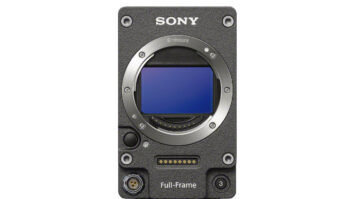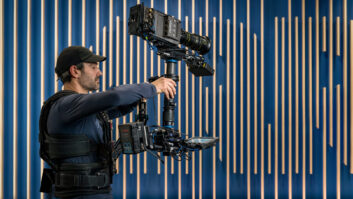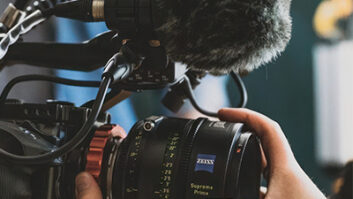Sony has unveiled its new cinema camera, VENICE 2, an upgrade to the original VENICE camera featuring a compact design, internal recording and two sensor options: the newly developed full-frame 8.6K sensor or the original 6K VENICE sensor.
Paired with a newly-developed 8.6 K (8640 x 5760) full-frame CMOS sensor, the VENICE 2 offers 16 stops of total latitude with excellent colour separation and shadow detail, said Sony.
VENICE 2 maintains many features from the original version, including Dual Base ISO, 8-stops of built-in ND filters and compatibility with a wide range of lenses, including all PL mount and Sony’s native E-mount. The camera also inherits its colour science from the original VENICE.
Sony added that the camera is “well suited” for VR, in camera VFX and virtual production setups, especially in combination with its high-contrast and large-scale Crystal LED displays.

Other features of the VENICE 2 include:
- 4K output with LUT applied
- Improved 3D LUT processing to improve picture quality
- EI changes directly applied to S-Log3 outputs
- LUT/ASC-CDL control via Ethernet/Wi-Fi
- Zoom to Fit (Full-Frame recording with 17:9/16:9 monitoring) operation
- Ethernet connector position changed to Camera Assistant side
- Lemo 2pin 12V output connector
- Internal microphone installed
Westworld and Game of Thrones cinematographer Robert McLachlan ASC, CSC, tested the 8.6K full-frame VENICE 2 and said: “I really wish we’d had a large format, 8.6K sensor like Sony VENICE 2 on Game of Thrones. It would have made it feel even more epic and, at the same time, more engaging, thanks to the increased resolution, richness, and dimensionality. The increased speed, cleaner highlights, and shadows together with the potential for super-shallow depth of field would have been a huge asset.”
Mission Impossible: Fallout and Ex Machina cinematographer Rob Hardy, BSC, added: “I’m used to using the original VENICE and I would say, I am a pretty much an advocate of that camera. The opportunity to use this VENICE 2 is actually a really fantastic one. This is the first time I’ve ever used that larger sensor, the 8.6K and we were lucky enough to get some anamorphic lenses that were set for the full cinematic effect and that really utilised that whole sensor. The ISOs have been bumped up so that enables me to shoot at a higher speed in the low light levels which is something what wasn’t really an option before, and that’s the big gain for me.”







